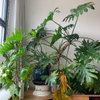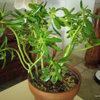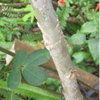Erythrina coralloides 'bicolor'
fouquieria
18 years ago
Featured Answer
Comments (11)
Heathen1
18 years agobihai
18 years agoRelated Professionals
Maple Valley Landscape Architects & Landscape Designers · Chattanooga Landscape Architects & Landscape Designers · Paradise Landscape Architects & Landscape Designers · Brentwood Landscape Contractors · Braintree Landscape Contractors · Choctaw Landscape Contractors · Columbine Landscape Contractors · Fairview Landscape Contractors · Fridley Landscape Contractors · Holtsville Landscape Contractors · Las Vegas Landscape Contractors · Lexington Landscape Contractors · Milford Landscape Contractors · Mount Sinai Landscape Contractors · Webster Groves Landscape Contractorstrini1trini
18 years agoLisaCLV
18 years agofouquieria
18 years agoLisaCLV
18 years agofouquieria
17 years agoddaw1_seattle-om_com
16 years agoEva Hart
6 years agostanofh 10a Hayward,Ca S.F. bay area
6 years ago
More Discussions









peters5001